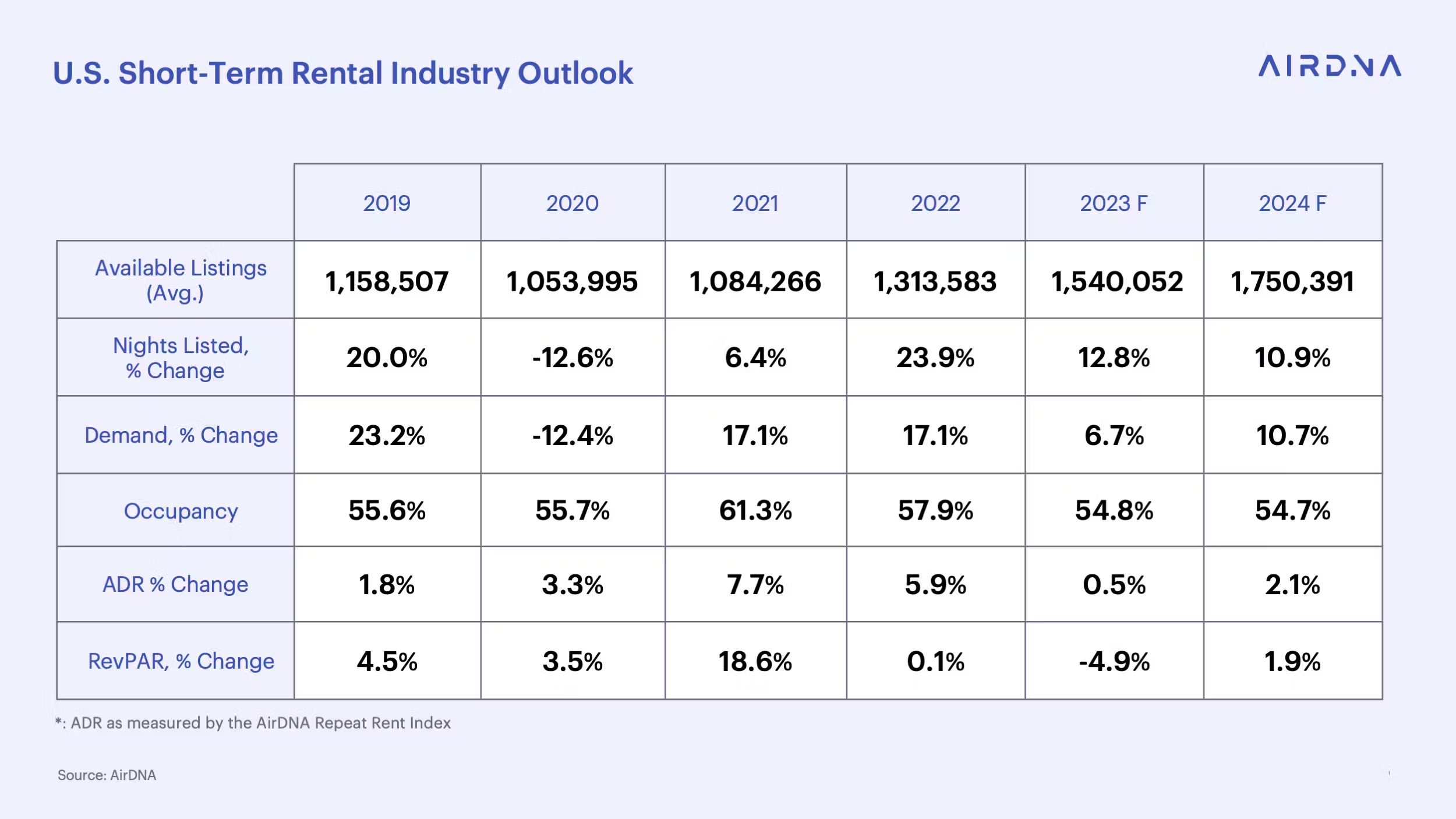The Mid-Term Rental Revolution: A New Era for Investors and Property Owners

“Change is the only constant in life.”
Heraclitus
Gone are the days when short-term rentals were the golden ticket for property investors and homeowners alike. Now, there's a new kid on the block: mid-term rentals. They're not just a fleeting trend but a response to the evolving needs of travelers and communities alike.
Remember when Airbnb burst onto the scene? It was revolutionary. Suddenly, everyone could be a host, turning their spare rooms into cash machines. But as we've ridden the wave from excitement to reality, we've hit some bumps along the way. From irate neighbors to city, county, and state regulations, the short-term dream has started to show cracks.
That's where monthly and mid-term rentals come in. They bridge the gap between the nightly hustle of short-term stays and the commitment of long-term leases. Think of them as the Goldilocks solution for the rental world: not too short, not too long, but just right, especially in urban and resort hotspots. But why are investors and property owners making the switch, and what does it mean for you?
Whether you're a seasoned investor or a curious newcomer, there's something in the mid-term rental phenomenon for everyone.
The Downshift in Short-Term Rental Demands
The vacation rental market saw a significant rise during and post-COVID, as travelers favored private, comfortable spaces over traditional hotels. This surge made short-term rentals extremely popular, catering to the increased desire for secluded and sanitized accommodations. However, as the old saying goes, "What goes up must come down." This rise led to regulatory changes and market saturation, prompting a pivot towards mid-term and monthly rentals as hosts and guests seek stability and compliance with new local laws.
It's clear the short-term rental landscape is shifting. It might be time to rethink our strategies and find a middle path that brings back the joy—and the profit—in hosting.

“According to AirDNA, STR occupancy decreased to 54.8% for 2023 (down from 57.9% in 2022), while available listings have spiked 17.2% year over year, reaching 1.54 million properties. This increased competition is forcing hosts to compete on price and quality, which benefits Airbnb guests but hurts host margins.”
The Rise of Mid-term and Monthly Rentals
The rise of mid-term and monthly rentals is reshaping the travel and housing landscape. This trend is opening the door to new types of travelers, like digital nomads, traveling professionals, and students who seek the comforts of home combined with the flexibility of shorter stays. These tenants value the amenities of short-term rentals, such as furnished living spaces and included utilities, but prefer longer stays that offer stability and a deeper community connection.
These extended stays also benefit property owners. Thanks to the extended duration of each booking, owners can target the mid-term market and enjoy more predictable income streams and consistent occupancy. The reduced turnover between guests means lower operational costs, from cleaning services to maintenance. This blend of short-term convenience with long-term stability creates a new evolution for the post-pandemic traveler.
Regulatory Impacts and the Housing Crisis: The Debated Impact of Short-Term Rentals on Housing Affordability
The landscape for short-term rentals is transforming rapidly due to stricter regulations being imposed across the United States. Many cities and states are enacting laws that limit the number of days a property can be rented out, require special licenses, or even impose minimum stay requirements. These changes are driven by various concerns, including housing shortages and neighborhood peace. For instance, cities like Honolulu and San Francisco have set strict limits on short-term rentals to address local housing issues and maintain community tranquility. Similarly, New York City and Santa Monica have implemented regulations that significantly impact short-term rental operations, driving property owners to consider alternative rental strategies.
This regulatory crackdown has led property managers and owners to pivot towards mid-term rentals and monthly stays, which often fall outside these stringent short-term regulations. By offering monthly rates and targeting demographics such as retirees or remote workers, property owners can navigate around the legal complexities while ensuring a steady income. These market shifts present a lucrative opportunity for property owners to cater to a new audience seeking longer stays, thus bypassing the turbulence in the short-term rental market.
Maximize Your Rental Earnings
List your property on MonthlyRentalsByOwner.com and American Snowbird to connect with travelers seeking monthly and mid-term rentals.
Simple, effective, and profitable.
In light of these changes, the shift towards mid-term and monthly rentals is both a strategic response to regulatory pressures and an alignment with changing traveler preferences. Adapting to this new landscape by understanding regulatory updates and shifting market demands can help property owners and managers maintain profitability while offering valuable housing solutions.
Adapting to the Market: How to Transition to Mid-Term Rentals
Transitioning to mid-term rentals offers a viable solution for property owners and investors navigating the fluctuating rental market and regulatory changes. This shift aligns with renters' evolving preferences and provides a more stable revenue stream, particularly in the face of stringent short-term rental regulations.
The rise of the 'Silver Tsunami' referring to the influx of retirees, many of whom are snowbirds seeking warmer climates for extended stays, exemplifies a key demographic driving the demand for mid-term rentals. Having reached retirement age, these folks often seek the comfort and community offered by seasonal relocations. They look for accommodations that provide the amenities of a home for several months, contrasting with the transient nature of short-term stays. This growing trend underlines the significant market potential for mid-term rentals catered to retirees seeking the snowbird lifestyle.
To begin this transition, property owners should consider tailoring their offerings to meet the needs of mid-term renters, who seek fully furnished accommodations, reliable internet connectivity, and flexible lease terms. Highlighting these features can make your listings more appealing to remote workers, traveling professionals, and families looking for temporary housing.
Leveraging specialized platforms like Monthly Rentals by Owner and American Snowbird can help reach the right audience. These platforms are tailored to connect property owners with individuals and families seeking monthly and mid-term accommodations, bypassing the typical short-term market and offering a direct line to a dedicated demographic. You can tap into this growing market segment looking for mid-term housing solutions by listing your properties on Monthly Rentals by Owner and American Snowbird.
Remember, transitioning to mid-term rentals isn't just about filling a gap in the market; it's about understanding and adapting to the changing landscape of real estate and traveler demand. As regulations tighten and traveler preferences evolve, adapting to be flexible and responsive to market trends will be key to maintaining profitability and relevance in the rental industry.
